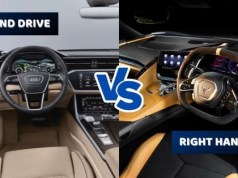
The Scenic Vision concept features a combination of battery and fuel-cell propulsion for a range of 500 miles, along with recycled materials
Gilles Vidal, design head at Renault, might have a point; precisely how do non-premium car makers survive and thrive in a world where it’s not only the planet that’s under threat, it’s the future of individual mobility as well?
Two years after he joined Renault from French rival Peugeot, Vidal said at the reveal of the Scenic Vision concept today: “The brand had been moving slowly ahead, getting better quality, using better design, but that isn’t necessarily appropriate for today where everything changes so fast, sometimes you need to rip it up and start again – change everything.”
The Scenic Vision evokes the name of the monospace (one box) car launched in 1997 that made Renault a fortune. And while these days the

company faces threats from all sides, not least the cost of withdrawing its operations from Russia, the Scenic – and the design and technology underpinning it – is seen as a way forward. The platform is said to be already at the prototyping stage.

Recyclable materials are at the heart of the design including the floor made of waste milk bottles and plastic pipe, the polyester seating materials, and recycled carbon-fibre (a notoriously difficult material to repurpose) for the wheel arches.
The interior (which is referred to as conceptual rather than headed for production) has no colouring; hues that appear are those of the light reflecting on the surface. The wheel design is equally intriguing, with small carbon flaps to cool the brakes but which close at speed to improve the aerodynamics.
Also posited as a significant change of direction is the hydrogen fuel-cell range-extender drivetrain (Renault boss Luca De Meo stated last year he wouldn’t be using this technology in passenger cars). Despite its apparent complexity, weight and cost, there are a number of advantages in this arrangement, not least the synergy of using the fuel cell’s heat to warm the battery in cold weather, which helps to increase the range.

The concept drivetrain uses the existing Megane E-Tech’s 160kW electric motor driving the front wheels via a step-down gear. The battery has a 40kWh capacity and the range is augmented by a 15kW fuel cell linked to a 2.5kg hydrogen tank in the front of the car.
The Scenic Vision’s range is up to 800km or 497 miles, so (it is claimed) a journey from Paris to Marseille could be accomplished with only a five-minute hydrogen fill-up in Lyon.
Renault claims the Scenic Vision has a carbon dioxide footprint (in production and use) that is 75 per cent lower than that of a conventional battery car.

“For me Scenic is not just the shape of the car,” says Vidal. “It is the space you free up which becomes the shape of the car.”
Nevertheless, there are some pretty strong statements, including distinctive running lights which ape Renault’s diamond logo. The beaky bonnet recalls Vidal’s early work at Peugeot, but the overall appearance (despite the jet-black bodywork) is less aggressive and intimidating than the normal run of family-sized SUVs.
The Scenic Vision’s drivetrain picks up on Renault’s work with Hyvia on a series of hydrogen hybrid Master light commercial vehicles. These large-capacity vans will go on the market this year in competition with Stellantis and others who are planning light commercials suitable for long distance, high payload work.









